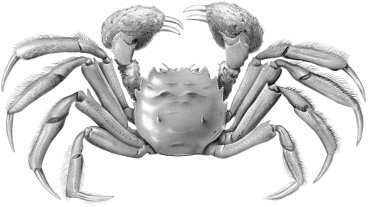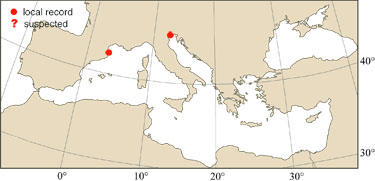
|
Relevant Synonyms
Misidentification
|
|
| drawing : Tuvia Kurz |
|
SHORT
DESCRIPTION
color :
greyish green to dark brown, sometimes with two pairs of pale spots.
common size : |
DISTINGUISHING CHARACTERISTICS
BIOLOGY / ECOLOGY
habitat :
shallow waters, rivers, estuaries, lagoons, coastal regions. |
|
1st
MEDITERRANEAN RECORD
|
 |
|
DISTRIBUTION
|
ESTABLISHMENT SUCCESS
speculated reasons for success :
|
|
|
MODE OF
INTRODUCTION |
IMPORTANCE TO
HUMANS |
|
KEY
REFERENCES
|
|
|